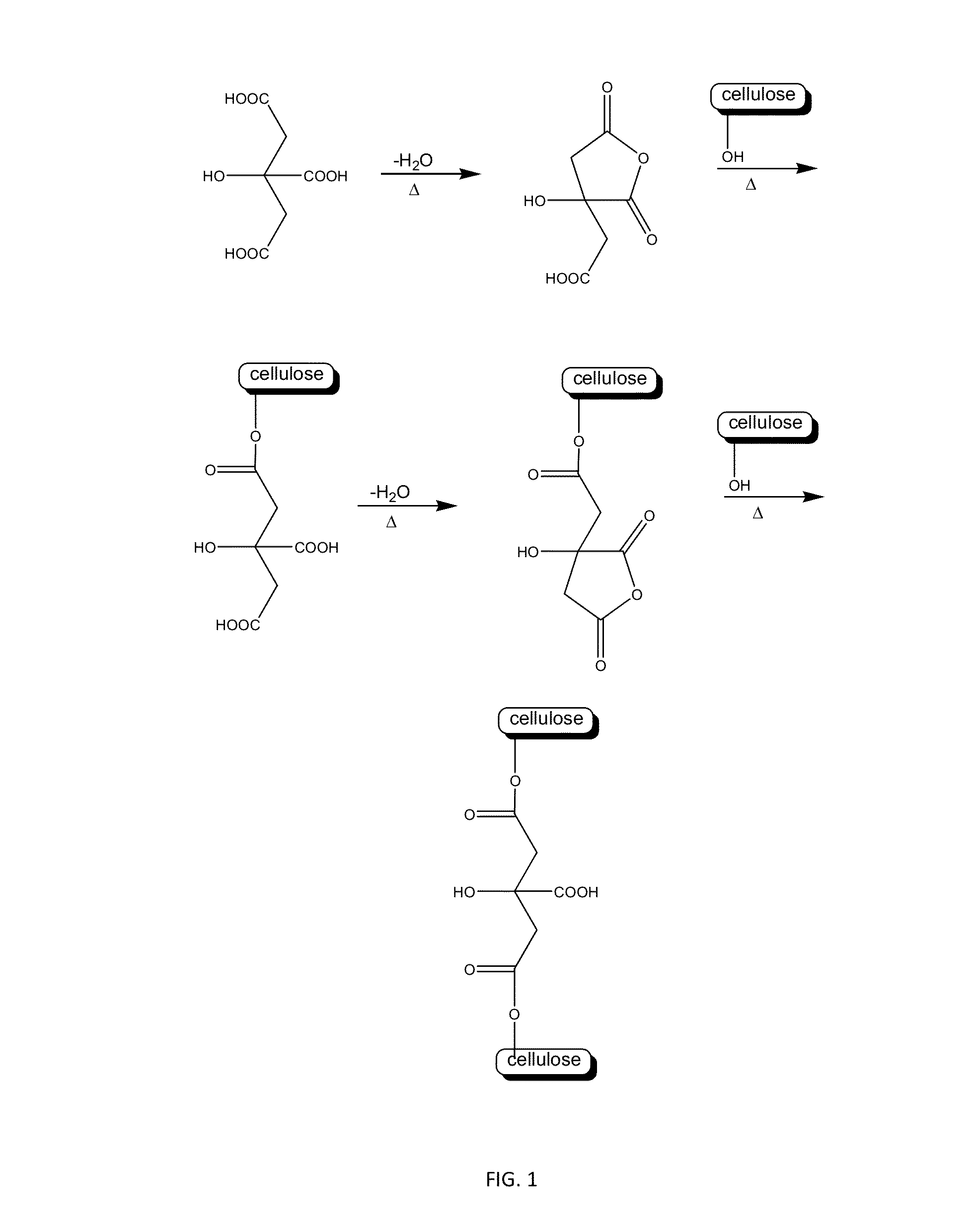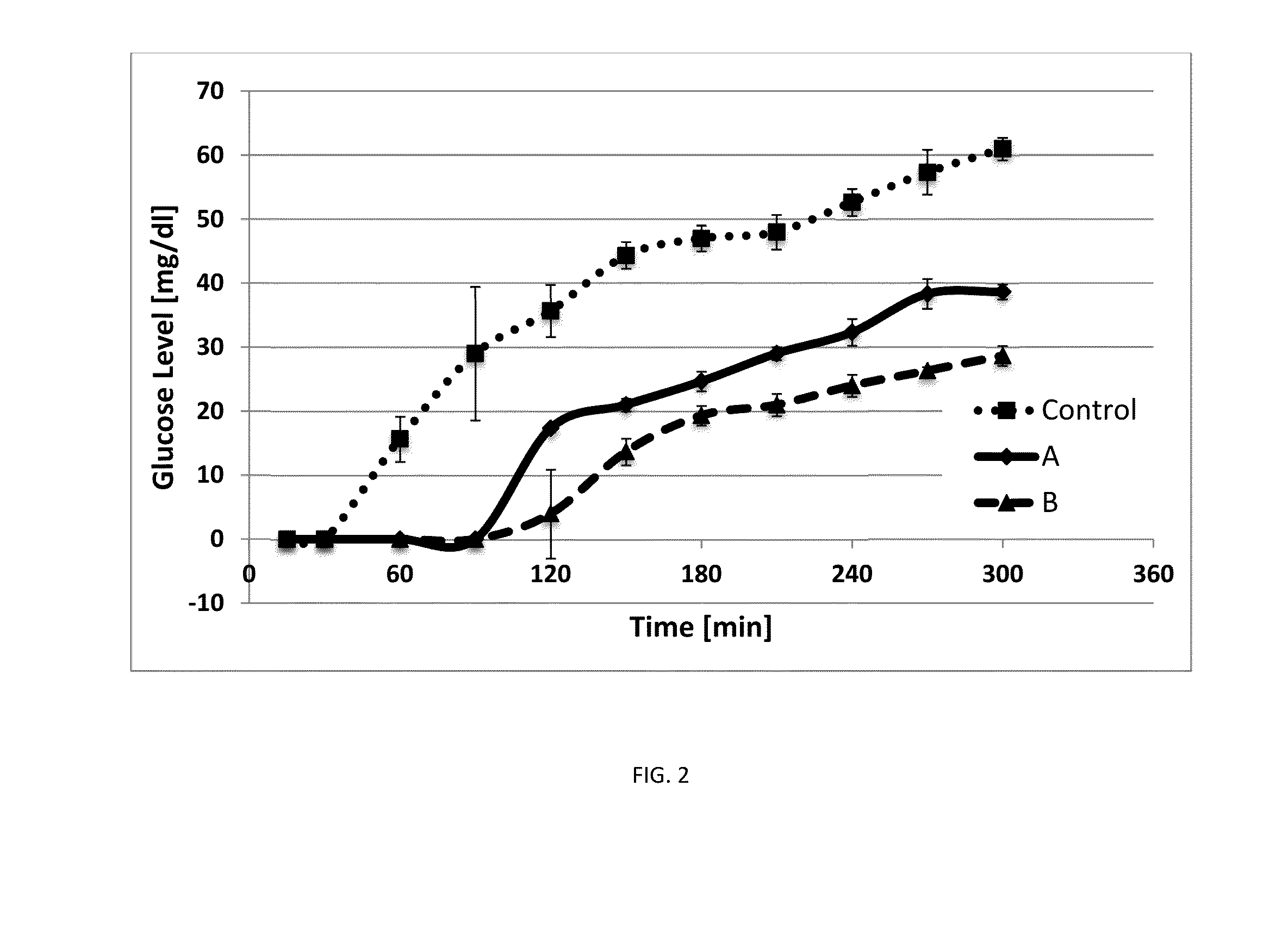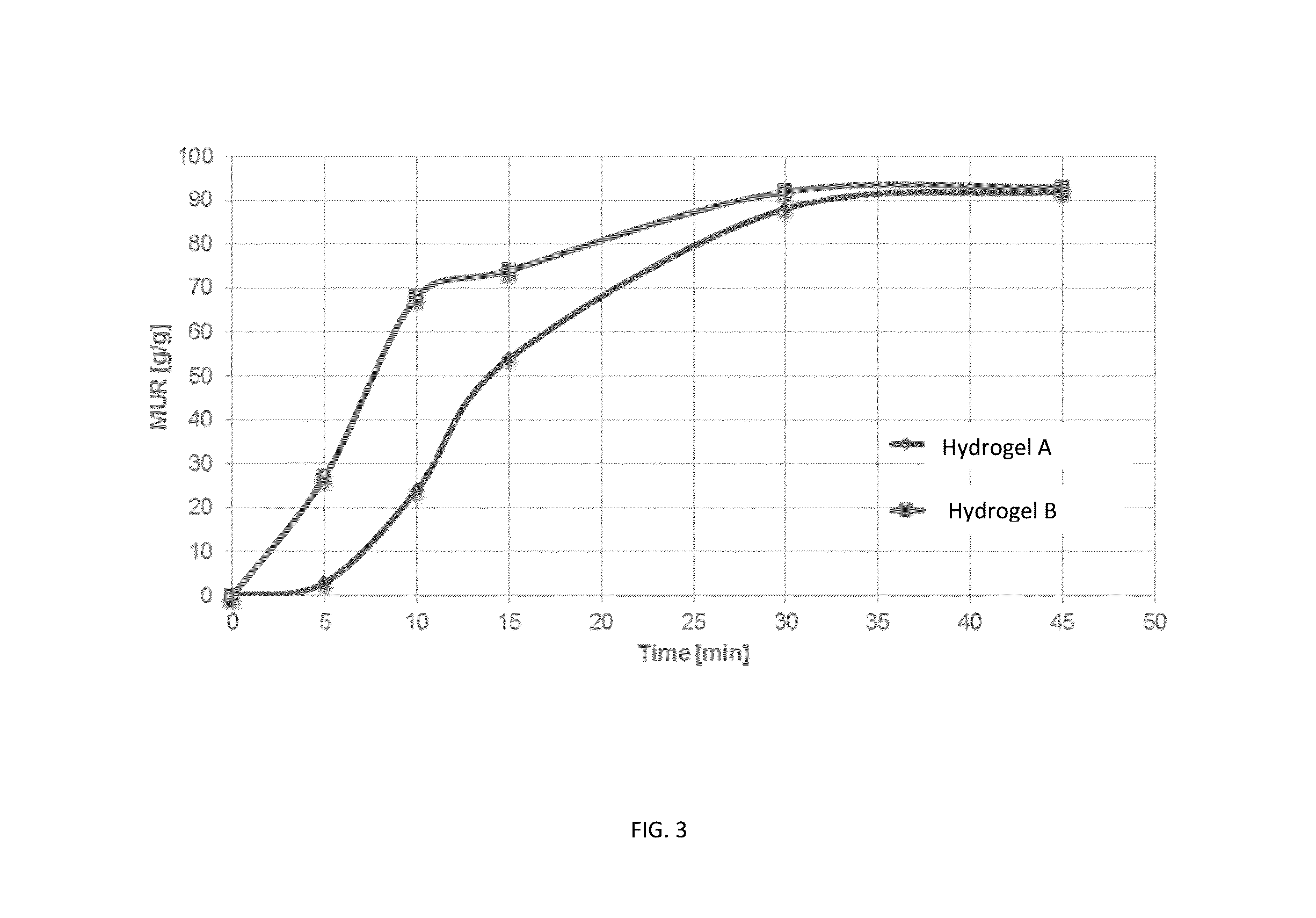Method for producing hydrogels coupling high elastic modulus and absorbance
- Summary
- Abstract
- Description
- Claims
- Application Information
AI Technical Summary
Benefits of technology
Problems solved by technology
Method used
Image
Examples
example 1
Preparation of Crosslinked Carboxymethylcellulose-Laboratory Scale
[0113]Crosslinked carboxymethylcellulose was produced using the following protocol.
Materials
[0114]Carboxymethylcellulose sodium salt (CMCNa): Aqualon 7H4FM (Ashland Inc.), viscosity range 7600-9000 cps (1% wt / wt solution in water at 25° C.)
[0115]Purified water (3 kg) was placed to a mixing bowl. 0.36 g citric acid was added and the mixture was stirred until the citric acid was completely dissolved. 180 g CMCNa was slowly added to the citric acid solution and the resulting suspension was mixed continuously for 18 hours using a mixer with a flat blade.
[0116]A portion of the material from the mixing bowl was placed with a spoon on a silicone sheet on a stainless steel tray. Using a plastic spatula the material was spread until it appeared uniform without spilling over the edges. This was repeated using additional trays until all of the material was spread on trays.
[0117]The trays in an oven set t...
example 2
Preparation of Crosslinked Carboxymethylcellulose-Large Scale
[0124]Crosslinked carboxymethylcellulose was produced on a large scale using the following protocol.
Materials
[0125]Carboxymethylcellulose sodium salt (CMCNa): AQUALON™ 7H4 FM (Ashland Inc.), viscosity range 7600-9000 cps (1% wt / wt solution in water at 25° C.)
[0126]To 5 kg of CMCNa in a mixing bowl was added 21 kg of water and mixing was begun. After 10 minutes a solution of 5 g citric acid in 21 kg of water was under constant mixing for 10 minutes. 21 kg of water was then added and mixed for 10 minutes. Finally, a solution of 5 g citric acid in 21 kg of water was add and the mixture was mixed for 200 minutes.
[0127]A portion of the material from the mixing bowl was placed with a spoon on a silicone sheet on a stainless steel tray. Using a plastic spatula the material was spread until it appeared uniform without spilling over the edges. This was repeated using additional trays until all of the materi...
example 3
Preparation of Crosslinked Carboxymethylcellulose with Lower Viscosity
Carboxymethylcellulose
[0136]Purified water (80 kg) was added to a 140 liter Hobart mixer and agitated. Citric acid (14.4 g) was added to the water and dissolved. CMCNa (4.8 kg; 7H3SXF (AQUALON™)), having a viscosity of 1000-2600 cps as a 1% (wt / wt) solution in water at 25° C., was then added to the solution and the resulting mixture was agitated at room temperature for 4 hours. The resulting solution was added to 30 stainless steel trays (2700 g solution per tray). The trays were placed in a SHELLAB oven at 70° C. for 48 hours. After the desiccation the material was ground by means of a cutting mill (Retsch cutting mill) equipped with a 2 mm screen. The granulated material was then sieved between 0.1-1.6 mm and then placed into the stainless-steel drum for the cross-linking reaction in the Salvis Thermocenter TC240 oven at 120° C. for 7 hours. The crosslinked polymer hydrogel thus obtained was washed with purified...
PUM
| Property | Measurement | Unit |
|---|---|---|
| Temperature | aaaaa | aaaaa |
| Temperature | aaaaa | aaaaa |
| Fraction | aaaaa | aaaaa |
Abstract
Description
Claims
Application Information
 Login to View More
Login to View More - R&D
- Intellectual Property
- Life Sciences
- Materials
- Tech Scout
- Unparalleled Data Quality
- Higher Quality Content
- 60% Fewer Hallucinations
Browse by: Latest US Patents, China's latest patents, Technical Efficacy Thesaurus, Application Domain, Technology Topic, Popular Technical Reports.
© 2025 PatSnap. All rights reserved.Legal|Privacy policy|Modern Slavery Act Transparency Statement|Sitemap|About US| Contact US: help@patsnap.com



